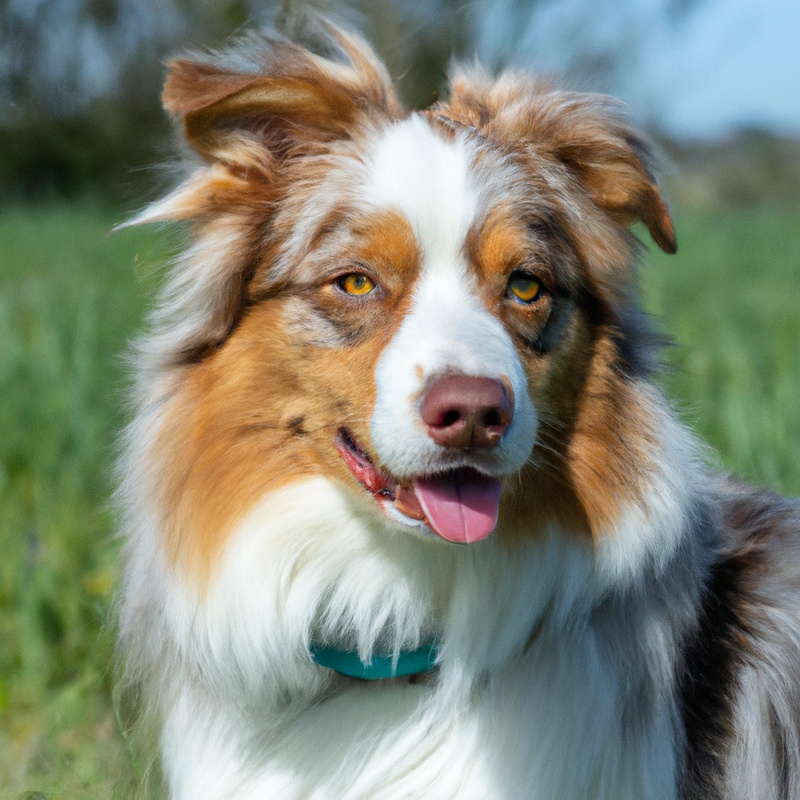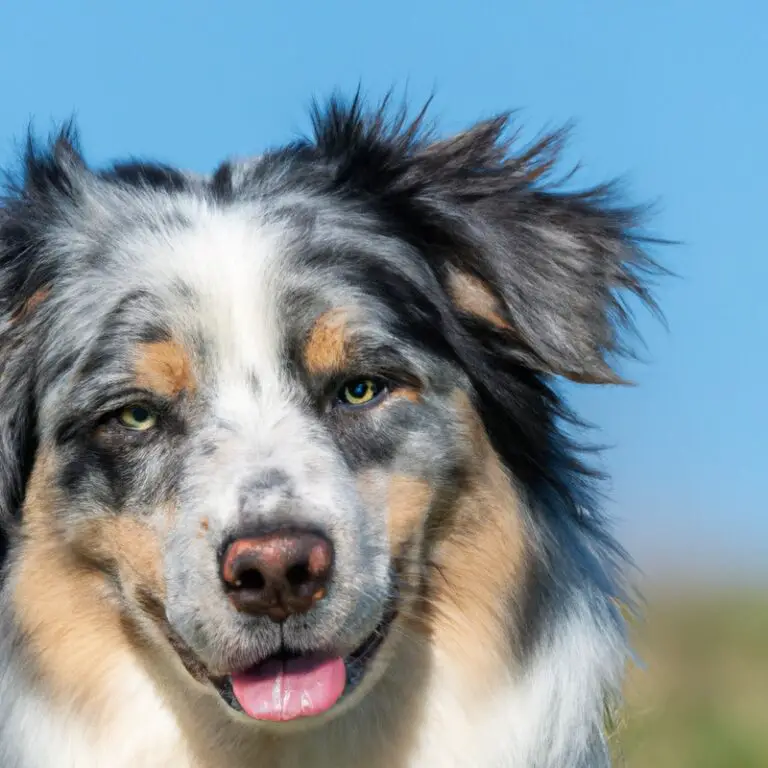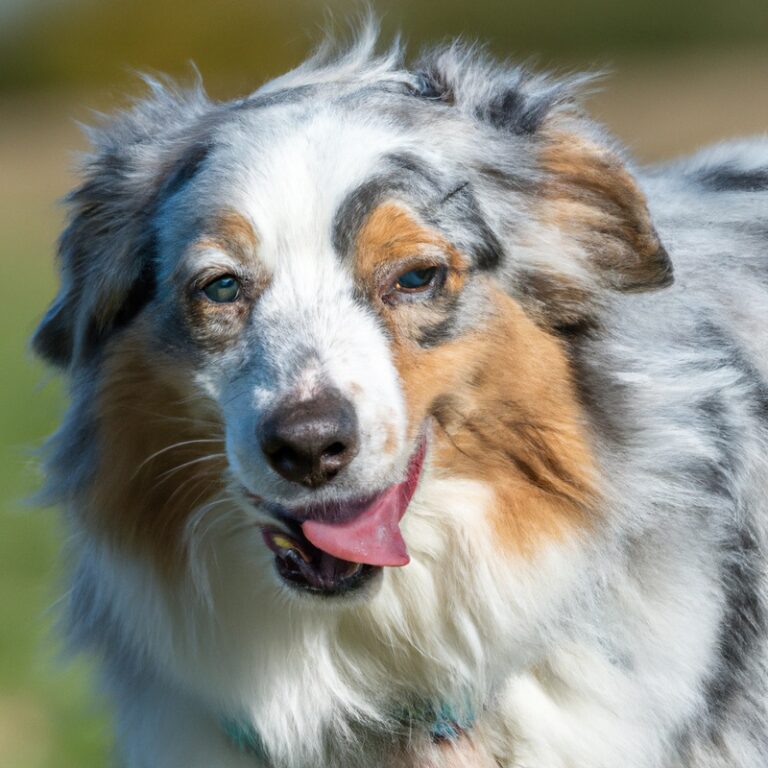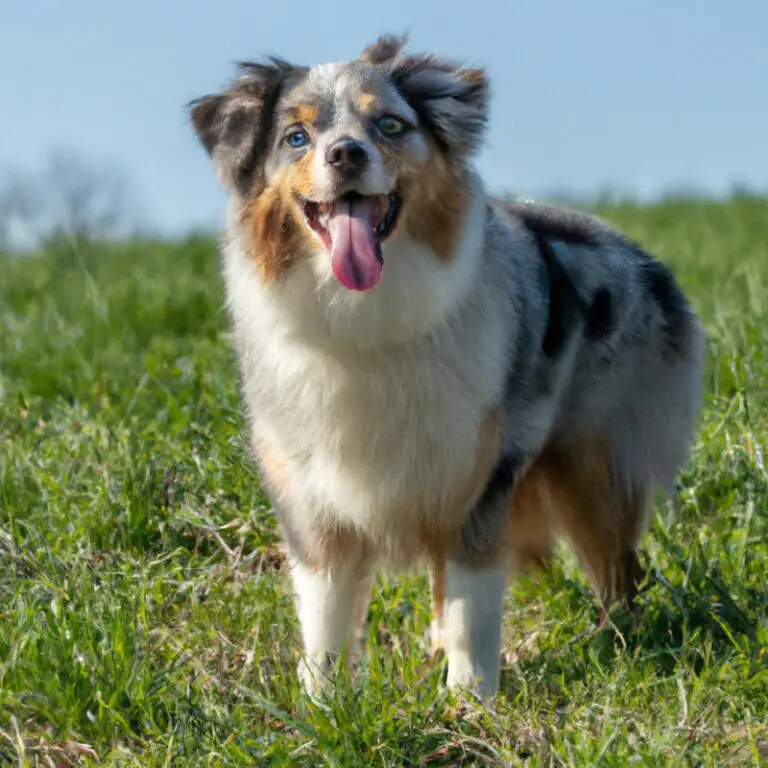Are Australian Shepherds Prone To Separation Anxiety?
Key Takeaways:
- Australian Shepherds have a higher likelihood of developing separation anxiety compared to other dog breeds.
- Early socialization and training can help reduce the risk of separation anxiety in Australian Shepherds.
- Providing mental stimulation and maintaining a consistent routine are important in preventing and managing separation anxiety in these dogs.
- Seeking professional guidance and implementing behavioral techniques can effectively address separation anxiety in Australian Shepherds.
Are you considering bringing home an Australian Shepherd? Well, before you do, let’s delve into their temperament and explore an important question: Are Australian Shepherds prone to separation anxiety?
As a professional in the field, I can assure you that this is a topic worth investigating.
Separation anxiety is a common issue faced by many dog owners, and Australian Shepherds are not exempt. In this article, we will discuss what separation anxiety is, the signs to look out for, the factors that contribute to it in Australian Shepherds, and most importantly, how to manage and prevent it.
So, let’s dive in and help your furry friend thrive!
| Topic | Are Australian Shepherds prone to separation anxiety? |
| Question | Do Australian Shepherds commonly develop separation anxiety? |
| Pros | 1. Australian Shepherds are highly intelligent and trainable, making it possible to address separation anxiety through proper training and management. 2. With proper socialization and early training, Australian Shepherds can learn to cope with being alone for reasonable periods. 3. Some Australian Shepherds might not develop separation anxiety at all, depending on their individual temperament and upbringing. |
| Cons | 1. Australian Shepherds are known to form strong bonds with their owners, which can make them more prone to separation anxiety if not properly addressed. 2. Lack of mental and physical stimulation can contribute to separation anxiety in Australian Shepherds. 3. Australian Shepherds with a history of abandonment or neglect may be at a higher risk of developing separation anxiety. |
| Conclusion | While Australian Shepherds can be more prone to separation anxiety, it is not a guarantee that all individuals of this breed will develop this condition. With proper training, socialization, and attention to their needs, separation anxiety can be managed in Australian Shepherds. |
Understanding Separation Anxiety in Dogs
What is Separation Anxiety in Dogs?
Separation anxiety in dogs is a condition where a dog becomes excessively stressed or panicked when separated from their owner or a familiar environment. This anxiety can manifest in various ways, such as barking, destructive behavior, urinating or defecating indoors, pacing, and excessive drooling.
It is important to understand that separation anxiety is not a form of disobedience or misbehavior, but rather a genuine fear and distress experienced by the dog.
Dogs with separation anxiety may feel unsafe and insecure when left alone, leading to these distressing behaviors.
Common Signs of Separation Anxiety in Dogs
Separation anxiety in dogs can be distressing for both the dog and their owner. It’s crucial to recognize the common signs of this condition so that you can offer appropriate support and help.
Some common signs of separation anxiety in dogs include:
- Destructive behavior: Dogs with separation anxiety may engage in destructive behavior, such as chewing furniture, shoes, or household items when left alone.
- Excessive barking or howling: If your dog barks or howls excessively when you’re not home, it might be a sign of separation anxiety.
- Pacing and restlessness: Dogs with separation anxiety may become restless and exhibit repetitive behaviors like pacing back and forth.
- Attempts to escape: Dogs may try to escape from their surroundings when experiencing separation anxiety. They may scratch at doors, windows, or even attempt to jump fences.
- Excessive salivation and panting: Some dogs may drool excessively or pant excessively when they’re anxious about being separated from their owners.
- Inappropriate elimination: Dogs with separation anxiety may urinate or defecate indoors, even if they are usually well-trained.
It’s essential to remember that these signs may overlap with other behavioral issues or medical conditions. If you suspect your dog has separation anxiety, it’s best to consult with a veterinarian or a professional dog behaviorist for an accurate diagnosis and a tailored treatment plan.
Patience, understanding, and consistent training will help your furry friend overcome separation anxiety and lead a happier, more relaxed life.

Factors That Contribute to Separation Anxiety in Australian Shepherds
Breed Predisposition to Separation Anxiety
Australian Shepherds are known to have a predisposition to separation anxiety. This means that they are more prone to experiencing this condition compared to other breeds.
It’s important to understand that not all Australian Shepherds will develop separation anxiety, but their genetics may make them more susceptible to it.
As a sensitive and intelligent breed, they form strong bonds with their owners and can become anxious and distressed when left alone. This breed’s predisposition to separation anxiety should be taken into consideration when choosing an Australian Shepherd as a pet.
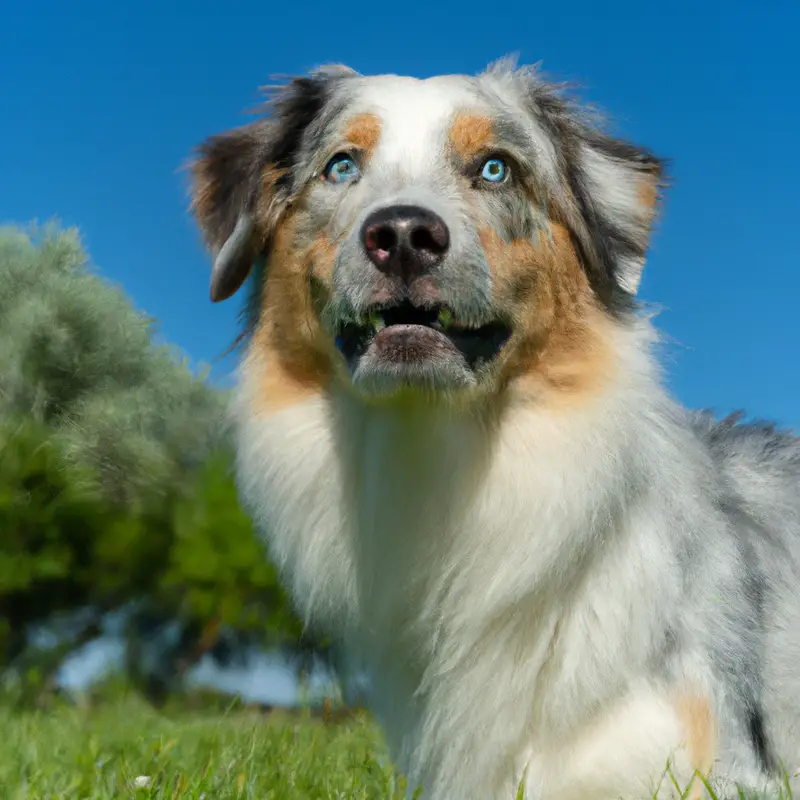
Environmental and Lifestyle Factors
Environmental and lifestyle factors can significantly contribute to separation anxiety in Australian Shepherds. Here are some things to consider:
- Time alone: If your Australian Shepherd spends long periods of time alone, this can increase the risk of separation anxiety. Dogs are social animals and need interaction and companionship.
- Changes in routine: Dogs thrive on consistency and can become anxious when their daily routine is disrupted. Changes such as a new job schedule or moving to a new home can trigger separation anxiety.
- Lack of mental stimulation: Australian Shepherds are intelligent and active dogs that require mental stimulation to prevent boredom. Without enough mental stimulation, they can develop anxious behaviors.
- Lack of physical exercise: Australian Shepherds are a high-energy breed that needs regular exercise. Insufficient physical activity can lead to restlessness and anxiety when left alone.
- Previous negative experiences: If your Australian Shepherd has had negative experiences in the past, such as being abandoned or mistreated, they may be more prone to separation anxiety.
- Lack of socialization: Proper socialization during puppyhood is crucial for dogs to feel comfortable and confident in different situations. Inadequate socialization can contribute to separation anxiety.
- Human attachment: Australian Shepherds are known for their strong bond with their owners. If they become overly dependent on their humans, they may experience separation anxiety when separated.
Remember, every dog is unique, and the factors that contribute to separation anxiety can vary from dog to dog. By understanding and addressing these environmental and lifestyle factors, you can help prevent or manage separation anxiety in your Australian Shepherd.
Early Socialization and Training
Early socialization and training are essential for Australian Shepherds to prevent or reduce separation anxiety. By exposing them to different people, animals, and environments during their critical socialization period (typically between 3 to 14 weeks), they learn to adapt and feel more comfortable when separated from their owners.
This can be achieved by taking them to puppy classes, introducing them to new experiences, and providing positive interactions with a variety of people and animals.
Additionally, teaching them basic obedience commands and providing mental stimulation through puzzle toys and games can help build their confidence and independence. Remember, consistency and positive reinforcement are key in the early socialization and training process.

Managing Separation Anxiety in Australian Shepherds
Identifying Triggers and Creating a Safe Environment
Identifying triggers and creating a safe environment is key in managing separation anxiety in Australian Shepherds. To start, pay attention to your dog’s behavior when you leave or prepare to leave.
Do they become anxious or clingy?
This can be a trigger. Other triggers might include certain sounds or actions associated with your departure.
Once you have identified the triggers, create a safe environment for your Australian Shepherd.
This means making their surroundings comfortable and secure. Provide a designated space where they feel safe, such as a crate or a specific room.
Make sure this space is well-equipped with their favorite toys, bedding, and familiar scents.
Additionally, create a routine that helps your dog feel secure and predictability. Stick to consistent meal times and exercise routines.
Gradually introduce alone time, starting with short periods and gradually increasing.
This helps your dog build confidence and reduces anxiety. If needed, consider seeking professional help from a dog trainer or behaviorist.
They can provide guidance specific to your Australian Shepherd’s needs and help address any underlying issues contributing to separation anxiety.
By identifying triggers and creating a safe environment, you can help alleviate separation anxiety in your Australian Shepherd and create a happier, more relaxed pet.
Establishing a Consistent Daily Routine
Establishing a consistent daily routine is essential for managing separation anxiety in Australian Shepherds. It helps them feel secure and know what to expect each day.
Here are some tips for creating a consistent routine:
- Stick to a regular schedule: Feed your Australian Shepherd at the same times each day, and take them for walks or playtime at consistent intervals. This helps them anticipate when they will have your attention and reduces anxiety.
- Set aside alone time: Gradually introduce short periods of alone time each day. Start with just a few minutes and gradually increase the duration over time. This will help your dog get used to being alone and reduce separation anxiety.
- Provide mental stimulation: Keep your Australian Shepherd’s mind engaged with puzzle toys, treat-dispensing toys, or interactive games. This helps alleviate boredom and anxiety when they are alone.
- Incorporate exercise: Australian Shepherds are energetic dogs that need plenty of physical exercise. Include daily walks, playtime, or activities that allow them to burn off energy. A tired dog is less likely to experience separation anxiety.
- Use positive reinforcement: Reward your Australian Shepherd for calm and independent behavior. Praise them when they are relaxed during alone time, and provide treats or toys as positive reinforcement.
- Create a comfortable environment: Make sure your dog has a cozy and safe space to relax when you’re not home. Provide them with a comfortable bed, toys, and familiar scents. This can help reduce anxiety.
By establishing a consistent daily routine, you can help your Australian Shepherd feel more secure and reduce separation anxiety. Remember to be patient and consistent in your approach, as it may take time for your dog to adjust.
Gradual Desensitization Training
Gradual desensitization training is an effective technique for managing separation anxiety in Australian Shepherds. It involves slowly and gradually exposing your dog to the triggers of their anxiety, such as being alone or the sound of keys jingling, in a controlled and positive way.
Start by identifying the specific triggers that cause your Australian Shepherd’s anxiety.
Once you know what they are, create a plan to expose them to these triggers in a gradual and controlled manner. For example, if your dog gets anxious when you leave the house, start by simulating your departure for a few seconds, then gradually increase the duration over time.
Make sure to create a positive and calm environment during the training.
Reward your dog with treats and praise when they remain calm and relaxed. This will help to reinforce positive associations with the triggers and gradually reduce their anxiety response.
Remember to be patient and consistent throughout the training process.
Gradual desensitization takes time and may require several sessions before you see significant improvements. It’s important to move at your dog’s pace and not rush the process.
If you feel overwhelmed or unsure about implementing gradual desensitization training on your own, it’s always a good idea to seek professional help.
A qualified dog trainer or behaviorist can provide guidance and support tailored to your Australian Shepherd’s specific needs. By incorporating gradual desensitization training into your management plan for separation anxiety, you can help your Australian Shepherd feel more comfortable and secure when left alone.
Remember, consistency and patience are key, and with time and effort, you can make a positive difference in your dog’s well-being.
Mental Stimulation and Physical Exercise
Mental stimulation and physical exercise are essential for managing separation anxiety in Australian Shepherds. These activities help keep their minds engaged and their bodies tired, reducing the likelihood of anxiety-driven behaviors.
When it comes to mental stimulation, puzzle toys and interactive games can be incredibly beneficial.
These toys challenge your Australian Shepherd’s problem-solving skills and keep them occupied while you’re away. You can also try hiding treats around the house for them to discover, which will provide mental stimulation and a fun scavenger hunt.
In terms of physical exercise, Australian Shepherds have high energy levels and need plenty of opportunities to burn off that energy.
Daily walks or runs, along with playtime in a fenced yard or at a dog park, are crucial. Fetch, tug-of-war, and agility training are also great ways to engage their bodies and minds.
By incorporating mental stimulation and physical exercise into your Australian Shepherd’s daily routine, you can help alleviate their separation anxiety.
Remember to provide a variety of activities and mix things up to keep them interested. It’s also important to be consistent with their exercise and play schedule to establish a sense of structure and routine.
Seeking Professional Help
If you have tried various strategies to manage your Australian Shepherd’s separation anxiety without success, it may be time to seek professional help. A professional dog trainer or a certified animal behaviorist can provide you with valuable guidance and support.
They have the expertise to assess your dog’s specific needs and develop a customized training plan.
Additionally, they can help you understand the underlying causes of separation anxiety and provide effective behavior modification techniques. Remember, seeking professional help can greatly improve your Australian Shepherd’s well-being and your overall relationship with your furry friend.
Preventing Separation Anxiety in Australian Shepherds
Early Socialization and Training
Early socialization and training are essential for preventing separation anxiety in Australian Shepherds. Exposing your puppy to different people, animals, and environments from a young age helps them develop confidence and adaptability.
This can reduce anxiety when you’re not around.
Positive reinforcement training techniques, such as reward-based methods, help create a strong bond between you and your Australian Shepherd. These methods also teach them to cope with being alone and provide mental stimulation.
Consistency is key when it comes to training.
Setting clear boundaries and expectations helps your dog feel secure and understand what is expected of them. By introducing your Australian Shepherd to short periods of alone time gradually and ensuring they have a safe and comfortable space, you can help them become accustomed to being alone without feeling anxious.
Remember, early socialization and training play a crucial role in preventing separation anxiety, so start as early as possible and be patient throughout the process.
Crate Training
Crate training can be a useful tool in preventing separation anxiety in Australian Shepherds. It provides them with a safe and comfortable space of their own, which can help alleviate stress when left alone.
When crate training, it’s important to introduce the crate gradually and make it a positive experience.
Start by placing treats and toys inside to encourage your Australian Shepherd to go in willingly. Gradually increase the amount of time they spend in the crate, always ensuring it’s a positive and stress-free experience.
Remember, crate training should never be used as a form of punishment.
Providing Enrichment and Interactive Toys
Providing enrichment and interactive toys for your Australian Shepherd can be a great way to prevent separation anxiety and keep them mentally stimulated. Here are some ideas:
- Puzzle toys: These toys require your dog to solve a puzzle or figure out how to get treats out of them. They can provide mental stimulation and keep your dog occupied while you are away.
- Kong toys: Kong toys are a classic choice for providing mental stimulation and entertainment for dogs. Fill them with treats or peanut butter to keep your Australian Shepherd engaged for longer periods of time.
- Interactive feeders: Instead of feeding your dog from a traditional bowl, consider using interactive feeders that require your dog to work for their food. This can help keep their mind engaged and provide a fun challenge.
- Hide and seek games: Hide treats or toys around the house for your Australian Shepherd to find while you are away. This can keep them entertained and provide a sense of accomplishment when they find their hidden treasures.
- Rotating toys: Keep a collection of different toys and rotate them regularly. This helps to keep your Australian Shepherd interested and prevents boredom.
Remember, each dog is unique, so it may take some trial and error to find the toys and enrichment activities that your Australian Shepherd enjoys the most. Providing a mix of mental and physical stimulation will help keep them happy and engaged, reducing the risk of separation anxiety.
Avoiding Punishment and Negative Reinforcement
Avoiding punishment and negative reinforcement is essential when it comes to preventing separation anxiety in Australian Shepherds. Instead of punishing your dog for exhibiting anxious behaviors, it’s important to focus on positive reinforcement and rewards for good behavior.
Using punishment or negative reinforcement can actually worsen separation anxiety in dogs.
It can create fear and stress, which can make the problem even more challenging to manage. Instead, it’s important to create a safe and positive environment for your Australian Shepherd.
When your dog displays calm and relaxed behavior, be sure to praise and reward them.
This can be with treats, toys, or verbal praise. Positive reinforcement helps to reinforce the idea that being calm and relaxed is a good thing.
Avoiding punishment and negative reinforcement also means refraining from scolding or yelling at your dog when you come home and find signs of anxiety.
Instead, greet your dog calmly and quietly, and praise them for their good behavior. Remember, the goal is to create a positive association with your departure and arrival, rather than causing your dog to feel anxious or fearful.
So, be patient and kind to your Australian Shepherd as you work on preventing separation anxiety.
Additional Tips and Resources for Australian Shepherd Owners
Separation Anxiety Support Groups and Forums
Separation Anxiety Support Groups and Forums: If you’re dealing with separation anxiety in your Australian Shepherd, connecting with others who understand what you’re going through can be incredibly helpful. That’s where support groups and forums come in.
These online communities provide a safe space to discuss your concerns, share experiences, and learn from others who have successfully managed separation anxiety in their dogs.
By joining a separation anxiety support group or forum, you can gain valuable insights, tips, and strategies from fellow Australian Shepherd owners who have faced similar challenges. You can ask questions, seek advice, and receive emotional support from a community of people who truly understand the unique needs of these intelligent and sensitive dogs.
Whether you’re a first-time Australian Shepherd owner or have had experience with separation anxiety in other breeds, these support groups and forums can offer a wealth of knowledge and resources.
You can exchange information about training techniques, recommended professionals, natural remedies, and more. Remember, though, that while support groups and forums can provide valuable guidance, it’s important to consult with a professional veterinarian or dog behaviorist for a comprehensive assessment and personalized advice for your specific situation.
They can offer expert guidance and develop a tailored plan to address your Australian Shepherd’s separation anxiety.
Natural Calming Remedies and Supplements
When it comes to natural calming remedies and supplements for Australian Shepherds with separation anxiety, there are some options you can consider. These remedies and supplements can help promote relaxation and reduce stress in your furry friend.
- Lavender: The scent of lavender has been known to have a calming effect on dogs. You can use lavender essential oil in a diffuser or spray diluted with water in your dog’s environment.
- CBD Oil: CBD oil derived from hemp plants has gained popularity for its potential calming effects on dogs. It can help reduce anxiety and promote a sense of calm. Make sure to consult with your veterinarian for the appropriate dosage.
- Valerian Root: Valerian root is a natural herb that can have a sedative effect on dogs. It can help promote relaxation and sleep. However, consult with your vet for the correct dosage and usage.
- Chamomile: Chamomile is well-known for its soothing properties. You can give your Australian Shepherd chamomile tea or use it as an ingredient in homemade dog treats.
- Adaptil: Adaptil is a synthetic pheromone product that mimics the natural calming pheromone released by mother dogs. It comes in various forms like sprays, diffusers, and collars.
Remember, it’s important to consult with your veterinarian before introducing any new supplements or remedies to your Australian Shepherd’s routine. They can guide you on the appropriate usage and dosage for your specific dog.
Professional Dog Training Programs
Professional dog training programs are a valuable resource for Australian Shepherd owners struggling with separation anxiety. These programs provide expert guidance and techniques to address behavioral issues and promote positive training methods.
Whether in-person or online, professional trainers can assess your dog’s needs, tailor a training plan, and provide ongoing support.
The structured nature of these programs helps create a consistent routine and fosters a stronger bond between you and your Australian Shepherd. Additionally, trainers can offer personalized advice and tips to address specific challenges you may encounter along the way.
By enrolling in a professional dog training program, you can gain the knowledge and skills necessary to manage separation anxiety effectively.
Positive Reinforcement Techniques
Positive reinforcement techniques are highly effective in managing and preventing separation anxiety in Australian Shepherds. Here are some simple but powerful techniques you can use:
- Reward calm behavior: When your Australian Shepherd remains calm and relaxed during periods of separation, reward them with treats, praise, or a favorite toy. This helps them associate being alone with positive experiences.
- Gradual desensitization: Gradually increase the amount of time your dog spends alone, starting with short intervals and gradually extending them. Reward your dog for remaining calm during these practice sessions.
- Use interactive toys: Provide your Australian Shepherd with interactive toys that engage their mind and keep them occupied. These toys can distract them and reduce anxiety during periods of separation.
- Practice obedience training: Teach your dog basic obedience commands like sit, stay, and come. This not only strengthens the bond between you and your dog but also helps them feel more secure and confident when alone.
- Create a safe space: Set up a designated area where your Australian Shepherd feels safe and comfortable when alone. This can be a crate or a specific room with their bed, toys, and familiar scents.
- Avoid punishment: Never punish your dog for displaying anxious behaviors or accidents caused by separation anxiety. Punishment only worsens their anxiety and can lead to other behavioral issues.
Remember, each dog is unique, and it may take time to find the right combination of techniques that work for your Australian Shepherd. Patience, consistency, and positive reinforcement are key to successfully managing separation anxiety.
Understanding the Importance of Patience and Consistency
Patience and consistency are key when it comes to dealing with separation anxiety in Australian Shepherds. It’s important to remember that this is a process and it will take time for your dog to adjust.
Consistency in your daily routine and training methods will help your dog feel more secure and confident.
When working with a dog who experiences separation anxiety, you should be patient and understanding. It can be frustrating and even heartbreaking to see your furry friend struggling, but getting frustrated or impatient will only make the situation worse.
Remember, your dog is not intentionally trying to upset you – they are just anxious and scared.
Consistency in your approach is also crucial. Stick to a regular schedule and try to keep things as predictable as possible for your dog.
This means establishing a routine for when you leave and come back home, as well as consistent training techniques.
Avoid making sudden changes to your dog’s routine or environment, as this can increase their anxiety. Instead, make changes gradually and give your dog time to adjust.
Consistency in your training methods is also important.
Use positive reinforcement and reward your dog for calm and relaxed behavior, while avoiding punishment or negative reinforcement. Remember, every dog is unique and may respond differently to different techniques.
It’s important to be patient and flexible, and to seek professional help if needed.
With time, patience, and consistency, you can help your Australian Shepherd overcome separation anxiety and lead a more balanced and happy life.
Final Verdict
Australian Shepherds are indeed prone to separation anxiety due to a combination of genetic predisposition, environmental factors, and lack of early socialization and training. However, there are effective methods for managing and preventing this issue.
By creating a safe environment, establishing a consistent routine, implementing gradual desensitization training, providing mental stimulation and exercise, and seeking professional help when needed, owners can greatly reduce separation anxiety in their Australian Shepherds.
With patience, consistency, and a commitment to their well-being, Australian Shepherd owners can ensure a happy and balanced companion.

